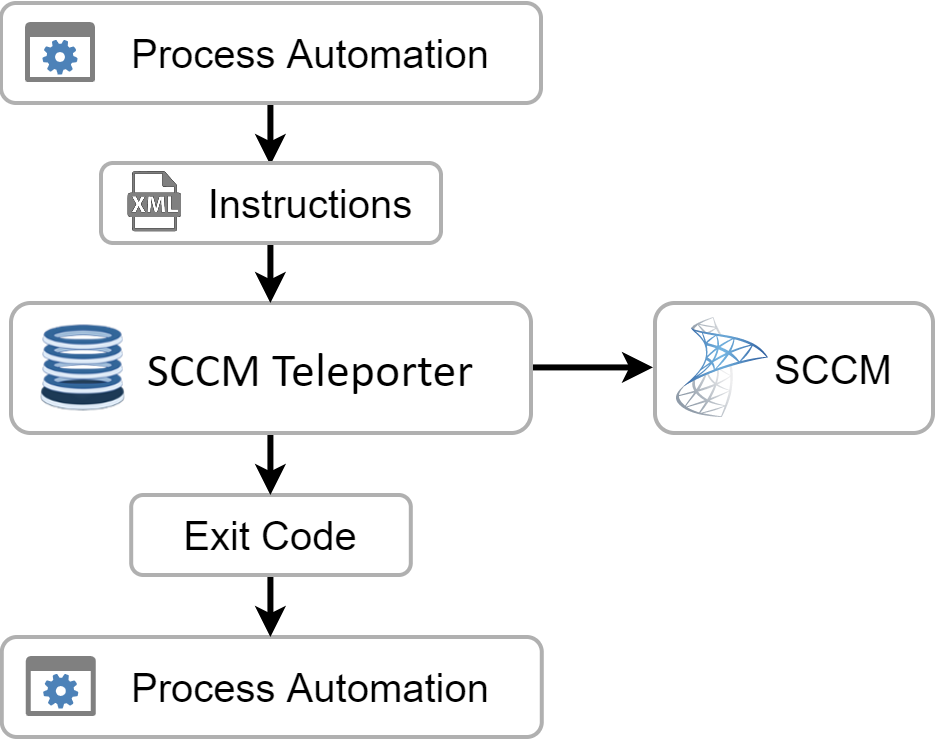Automation
Automation
All functions of the SCCM Teleporter can be used via command line call.
Control takes place via an open SCCM Teleporter XML format. Thus, process logic and SCCM Teleporter are independent and interchangeable components.
Overview
The following diagram shows the integration of the SCCM Teleporter into a process automation in a simplified way.
- mDynamic generation of the XML statement file within your own individual process logic, e.g. using Powershell.
- Calling the SCCM Teleporter and specifying the XML file as command line parameter.
- Execution of the steps to be performed, e.g. transferring a task sequence from the reference environment to the productive environment.
- Return of an exit code (e.g.: 0 = success) for evaluation within the further process logic.
Automation within existing processes
Another application scenario is the supplementation of existing automation processes.
Illustration of a control and integration of the SCCM Teleporter with automated execution:
Execution
Execution is done by calling the SCCMTeleporter.exe file and specifying the XML file as command line parameter, e.g. "SCCMTeleporter.exe \\share\Import.xml". You can find a detailed description in the chapter Command line version.
The statement file can be generated dynamically as required, a complete file or UNC path can also be passed as a command line parameter
After execution, an exit code is returned (e.g.: 0 = success).
Functions
Import and/or export statements can be defined, the transfer of SCCM objects consists of an export statement (specifying the source SCCM site) and an import statement (specifying the target SCCM site).
Required import or export settings, as well as SCCM teleporter filters for object selection, can be generated dynamically as well as created and reused via the graphical user interface.

